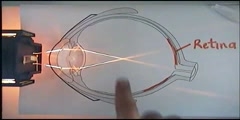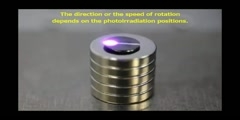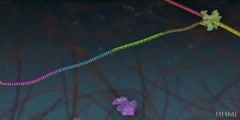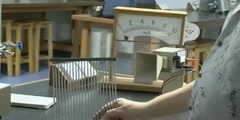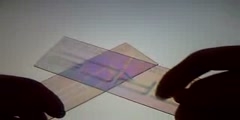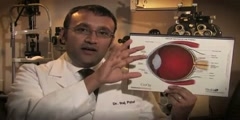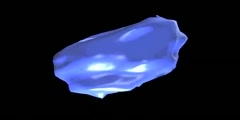Lec 29 - Preparing Single Enantiomers and the Mechanism of Optical Rotation
"Lec 29 - Preparing Single Enantiomers and the Mechanism of Optical Rotation" Freshman Organic Chemistry (CHEM 125) Within a lecture on biological resolution, the synthesis of single enantiomers, and the naming and 3D visualization of omeprazole, Professor Laurence Barron of the University of Glasgow delivers a guest lecture on the subject of how chiral molecules rotate polarized light. Mixing wave functions by coordinated application of light's perpendicular electric and magnetic fields shifts electrons along a helix that can be right- or left-handed, but so many mixings are involved, and their magnitudes are so subtle, that predicting net optical rotation in practical cases is rarely simple. 00:00 - Chapter 1. Introduction: Challenges in Isolating Enantiomers Despite Optical Activity 06:09 - Chapter 2. Barron: A Sketch of Lord Kelvin and Chirality 12:35 - Chapter 3. Natural and Magnetic Optical Rotation 20:49 - Chapter 4. Understanding Optical Activity via the Carbonyl Chromophore 37:22 - Chapter 5. Who Cares? Chiral Switches in Life and Drugs Complete course materials are available at the Open Yale Courses website: http://open.yale.edu/courses This course was recorded in Fall 2008.
Video is embedded from external source so embedding is not available.
Video is embedded from external source so download is not available.
Channels: Chemistry (General)
Tags: Molecular Light Scattering Optical Activity Polarization esomeprazole omeprazole thalidomide
Uploaded by: yalefreshorganic ( Send Message ) on 05-09-2012.
Duration: 50m 19s
Here is the next lecture for this course
Lec 31 - Preparing Single Enantiomers and ...
48:53 | 2505 viewsLec 17 - An Ultrafast Optical Digital Tec ...
01:05:02 | 2548 viewsLec 25 - Models in 3D Space (1869-1877); ...
49:02 | 2617 viewsRole of the optical lens in focusing
01:13 | 4659 viewsLec 20 - Physics 111: Optical Instruments ...
51:04 | 3249 viewsLec 31 - Physics 111: Optical Pumping (OPT)
32:54 | 3739 viewsOptical Motion Control of Maglev Graphite
01:24 | 3366 viewsThe mechanism how LUX operon controls lig ...
02:25 | 10270 viewsOptical projection tomography
00:00 | 11778 viewsWhat is Polarization of Light?
08:43 | 3109 viewsPressure effects on light polarization th ...
01:08 | 7745 viewsOptical astigmatism
02:02 | 5204 viewsOptical Illusion: tricking the visual system
03:20 | 5101 viewsThe antiviral activity mechanism of action
04:04 | 9920 views3D Hologram Maker Cool Optical Illusion
01:28 | 4230 viewsNo content is added to this lecture.
This video is a part of a lecture series from of Yale
Lecture list for this course
Lec 2 - Force Laws, Lewis Structures and Resonance
Lec 3 - Double Minima, Earnshaw's Theorem and Plum-Puddings
Lec 4 - Coping with Smallness and Scanning Probe Microscopy
Lec 6 - Seeing Bonds by Electron Difference Density
Lec 7 - Quantum Mechanical Kinetic Energy
Lec 8 - One-Dimensional Wave Functions
Lec 9 - Chladni Figures and One-Electron Atoms
Lec 10 - Reality and the Orbital Approximation
Lec 11 - Orbital Correction and Plum-Pudding Molecules
Lec 12 - Overlap and Atom-Pair Bonds
Lec 13 - Overlap and Energy-Match
Lec 14 - Checking Hybridization Theory with XH_3
Lec 15 - Chemical Reactivity: SOMO, HOMO, and LUMO
Lec 16 - Recognizing Functional Groups
Lec 17 - Reaction Analogies and Carbonyl Reactivity
Lec 18 - Amide, Carboxylic Acid and Alkyl Lithium
Lec 19 - Oxygen and the Chemical Revolution (Beginning to 1789)
Lec 20 - Rise of the Atomic Theory (1790-1805)
Lec 21 - Berzelius to Liebig and Wöhler (1805-1832)
Lec 22 - Radical and Type Theories (1832-1850)
Lec 23 - Valence Theory and Constitutional Structure (1858)
Lec 24 - Determining Chemical Structure by Isomer Counting (1869)
Lec 25 - Models in 3D Space (1869-1877); Optical Isomers
Lec 26 - Van't Hoff's Tetrahedral Carbon and Chirality
Lec 27 - Communicating Molecular Structure in Diagrams and Words
Lec 28 - Stereochemical Nomenclature; Racemization and Resolution
Lec 30 - Esomeprazole as an Example of Drug Testing and Usage
Lec 31 - Preparing Single Enantiomers and Conformational Energy
Lec 32 - Stereotopicity and Baeyer Strain Theory
Lec 33 - Conformational Energy and Molecular Mechanics
Lec 34 - Sharpless Oxidation Catalysts and the Conformation of Cycloalkanes
Lec 35 - Understanding Molecular Structure and Energy through Standard Bonds
Lec 36 - Bond Energies, the Boltzmann Factor and Entropy
Lec Last - Potential Energy Surfaces, Transition State Theory and Reaction Mechanism




